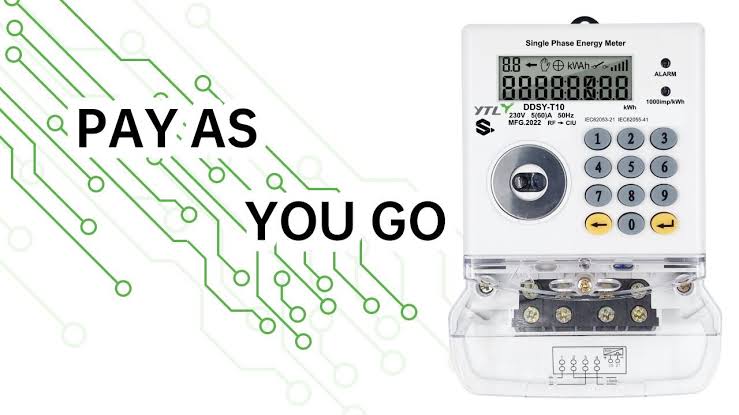The Federal Government’s plan to eliminate estimated billing by the end of 2024 is facing significant hurdles.
The latest report from the National Bureau of Statistics (NBS) revealed that the number of customers on estimated billing increased by 10% quarter-on-quarter in Q1 2024.
This means that about 52% of total DisCos customers are on estimated billing this quarter, which is an increase from the 48% recorded in the previous quarter.
The recent rise in the number of customers on estimated billing across Nigeria’s electricity distribution companies (DisCos) highlights persistent issues in the Nigerian electricity sector, despite government efforts.
Meanwhile, the Nigeria Electricity Report by the National Bureau of Statistics (NBS) for the first quarter of 2024 shows a 10% quarter-on-quarter increase in estimated billing customers, as the metering gap widens.
The number of customers on estimated billing rose from 5.83 million in Q4 2023 to 6.43 million in Q1 2024, marking a notable 10% increase.
On a year-on-year basis, the rise in estimated billing customers is equally significant. From Q1 2023 to Q1 2024, the number of estimated billing customers increased by 8% from 5.96 million.
This increase occurs as the government continues to subsidize customers not on Band A, while Band A customers on estimated billing are still required to pay based on estimation.
It further highlights a persistent issue within the Nigerian electricity sector the inability to adequately meter all customers to bridge the metering gap despite various initiatives, leading to reliance on estimated billing.
For Instance, the Ibadan Electricity Distribution Company (IBEDC), recorded the highest number of estimated billing customers, with 1.41 million in Q1 2024, up from 1.37 million in the previous quarter. Enugu Electricity Distribution Company (EEDC) also saw a significant increase, reaching 765,662 customers from 709,104 in Q4 2023.
The reliance on estimated billing is a contentious issue, often leading to disputes between consumers and DISCOs. Many consumers feel the estimates are inflated and do not reflect their actual consumption, leading to calls for more accurate metering.
The Nigeria Electricity Regulatory Commission (NERC) fined 11 electricity distribution companies 5 billion over non-compliance with mandatory capping of estimated billing of unmetered customers.
Despite efforts to improve metering, the report shows only a modest 5% quarter-on-quarter increase in metered customers, from 5.61 million in Q4 2023 to 5.91 million in Q1 2024.
This growth is overshadowed by the more rapid rise in estimated billing customers, which doubled the growth in metered customers.
However, year-on-year, the number of metered customers increased by 11%, from 5.31 million in Q1 2023. While this indicates progress, it is not sufficient to keep up with the overall increase in customer numbers and the rise in estimated billing customers.
DISCOs face several challenges in closing the metering gap, including financial constraints, logistical issues, and regulatory hurdles. The Abuja Electricity Distribution Company (AEDC) and Benin Electricity Distribution Company (BEDC) are among the DISCOs making strides, with AEDC increasing its metered customers to 892,028 and BEDC to 672,179 in Q1 2024.
However, these efforts are not enough to keep pace with the overall increase in customer numbers.
The total number of customers served by DISCOs in Nigeria has shown a consistent increase. In Q1 2024, the total customer base grew to 12.33 million from 12.12 million in Q4 2023, a quarter-on-quarter rise of 2%. Year-on-year, this represents a 9% increase from 11.27 million in Q1 2023. This growth reflects the ongoing expansion of electricity access across the country.
Among the DISCOs, Ibadan Electricity Distribution Company (IBEDC) boasts the highest total number of customers, reaching 2.48 million in Q1 2024, up from 2.42 million in Q4 2023. This increase highlights IBEDC’s extensive customer base and the challenges it faces in balancing estimated and metered billing.
Enugu Electricity Distribution Company (EEDC) also has a substantial customer base, with 1.39 million customers in Q1 2024, up from 1.32 million in the previous quarter.
Abuja Electricity Distribution Company (AEDC) follows closely with 1.46 million customers, reflecting its significant presence in the capital region.
However, with 52% (an increase from 48% recorded in the previous quarter) of these customers still on estimated billing in Q1 2024, the need for accelerated metering efforts is clear.
While campaigning for the presidency, Bola Tinubu released a manifesto outlining a plan to eliminate estimated billing and ensure that all Nigerian homes and businesses are equipped with prepaid meters.
However, under his administration, the number of estimated billing customers has seen the largest growth rate both quarterly and yearly, based on data from the NBS up to 2022.
In January 2024, the NERC mandated the eleven electricity distribution companies to invest a total of N275 billion in electricity meters between 2024 and 2027. Each DisCo was required to spend approximately N6.25 billion annually on 65,000 electricity meters.
Despite these government efforts, the metering gap remains a significant challenge, with far-reaching implications for Nigeria’s power sector.
Accurate metering is essential for efficient billing, revenue collection, and overall customer satisfaction. Without it, DISCOs may struggle to recover costs and invest in much-needed infrastructure improvements.
The rise in estimated billing has exacerbated these challenges, leading to collection losses. Revenue collected by the DISCOs dropped by approximately 1.13%, falling from N294.95 billion in Q4 2023 to N291.62 billion in Q1 2024.
This decline highlights the financial strain on DISCOs, alongside the urgent need for comprehensive metering solutions to enhance operational efficiency and financial stability in Nigeria’s electricity sector.
While there has been progress in increasing the number of metered customers, the rate of growth is insufficient to counterbalance the rapid rise in estimated billing customers.
Addressing the metering gap requires concerted efforts from all stakeholders, including government support, investment in metering infrastructure, and improved regulatory frameworks.






